
The bean weevils or seed beetles are a subfamily (Bruchinae) of beetles, now placed in the family Chrysomelidae, though they have historically been treated as a separate family. They are granivores, and typically infest various kinds of seeds or beans, living most of their lives inside a single seed. The subfamily includes about 1,650 species and are found worldwide.

Stator is a genus of seed beetles in the family Chrysomelidae. There are about 14 described species in Stator. Most members of the genus specialize on legumes.
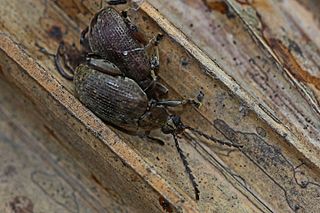
Caryobruchus gleditsiae is a species of beetle in the family Chrysomelidae. It lives in North and Central America and develops inside the seeds of palm trees. Adults grow to a maximum length of 11 mm (0.43 in), the size depending on the size of the seed it grew up in. The species was first described by Carl Linnaeus in his 1763 Centuria Insectorum.

Parevander xanthomelas is a species of beetle in the family Cerambycidae. It was described by Félix Édouard Guérin-Méneville in 1844, and has been classified in the genus Parevander since the circumscription of that genus by Per Olof Christopher Aurivillius in 1912.

Acanthoscelides is a genus of bean weevils of the subfamily Bruchinae. They are native to the New World. About one third of them can be found in Mexico.
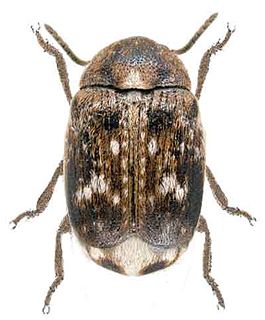
Bruchus is a genus of beetles in the leaf beetle family, Chrysomelidae. They are distributed mainly in the Palearctic, especially in Europe. Several occur in other parts of the world, such as North America, Africa, and Australia, as introduced species. Several species are notorious agricultural pests.
Acanthoscelides tenuis is a species in the family Chrysomelidae, in the order Coleoptera ("beetles"). It is found in North America.

Euparius is a genus of fungus weevils in the family Anthribidae. There are at least 6 described species in Euparius.

Sibinia is a genus of leguminous seed weevils in the family Curculionidae. There are at least 20 described species in Sibinia.
Acanthoscelides seminulum is a species of leaf beetle in the family Chrysomelidae. It is found in North America.

Neofidia is a genus of leaf beetles in the subfamily Eumolpinae. It is distributed in North and Central America. There are 24 species recognised in Neofidia.

Lasconotus is a genus of cylindrical bark beetles in the family Zopheridae. There are at least 20 described species in Lasconotus.

Gibbobruchus is a genus of pea and bean weevils in the family Chrysomelidae. There are about seven described species in Gibbobruchus.
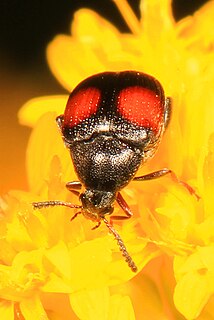
Sennius is a genus of pea and bean weevils in the family Chrysomelidae. There are at least 20 described species in Sennius.
Anisostena is a genus of tortoise beetles and hispines in the family Chrysomelidae. There are at least 30 described species in Anisostena.
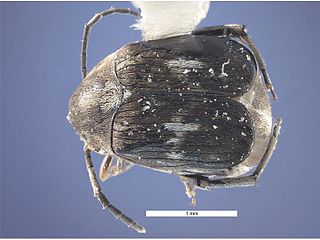
Zabrotes is a genus of pea and bean weevils in the beetle family Chrysomelidae. There are more than 20 described species in Zabrotes.
Merobruchus is a genus of pea and bean weevils in the beetle family Chrysomelidae. There are more than 20 described species in Merobruchus.
Meibomeus is a genus of pea and bean weevils in the beetle family Chrysomelidae. There are about 12 described species in Meibomeus.
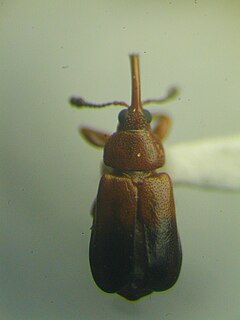
Rhopalotria is a genus of cycad weevils in the beetle family Belidae. There are about six described species in Rhopalotria.
Hapalips is a genus of pleasing fungus beetles in the family Erotylidae. There are about 12 described species in Hapalips.















